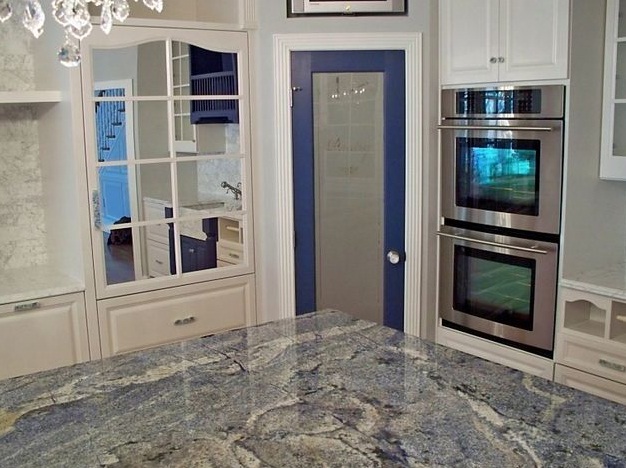Every slab of this natural stone is one of a kind — but there are things to watch for while you’re admiring its unique beauty.
Mottled, monochromatic or veined; beige or bold blue; affordable or budget breaking — granite defies nearly all typecasting, save for being the go-to kitchen surface for durability. It’s a natural stone, so every individual slab of the hundreds of named colors is unique in its hue, patterning and shading, guaranteeing frustration to the uninitiated.
Because the myriad choices can be downright daunting, we — along with the experts at Intrepid Marble and Granite — demystify granite and its cost variables, adding some tips for finding your perfect slab.
Cost Variables
Paying for more than you use. Many suppliers will charge you for the whole slab, regardless of how much you use. To reduce waste and save money, work with your designer and a supplier to select a slab early and work that slab into your design.
Differences in color. Mother Nature creates some common colors (think natural hues), whereas some colors — like this lovely blue — are rarer treats. Costs increase for slabs with a scarcer hue.
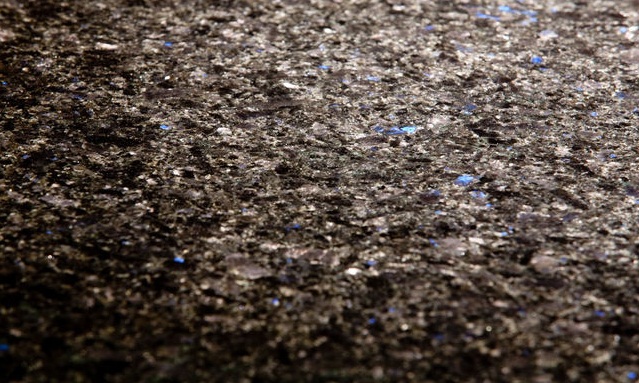
Availability. Not only the quantity of stone but also access — which can be restricted by seasonal quarries or political unrest — can affect the cost.
Semiprecious stones. Some granites contain semiprecious stone, like this granite with flecks of labradorite, which can increase the slab’s cost.
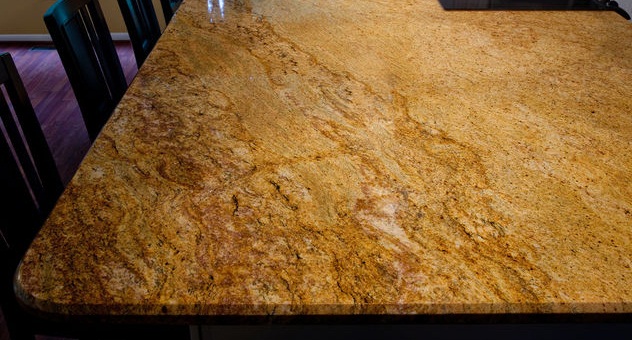
Sources
While granite is found nearly worldwide, most granite is mined from Brazil or India. Indian granite, like this Madura Gold, is typically very dense, is available in larger slabs and has lots of movement but is affordable. Brazilian granite is plentiful and handsome.
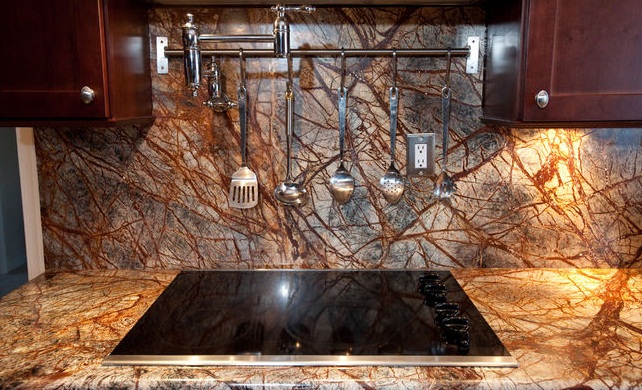
Composition
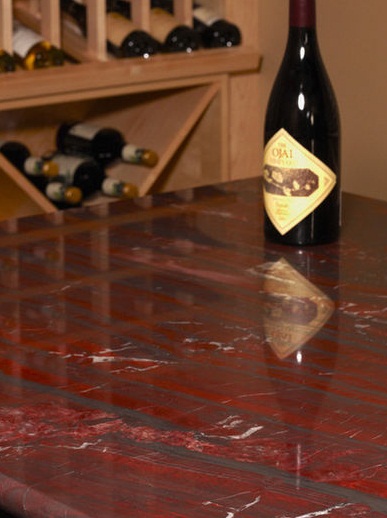 Not all granite slabs are actually granite. For countertops, “granite” is an umbrella term that includes several dense stones that are acid resistant, and rank 7 or 8 on the Mohs Scale of Mineral Hardness. This Rainforest Brown is considered “serpentine,” indicating a composition somewhere between granite and marble. Suppliers may categorize it as either of those two stones.
Not all granite slabs are actually granite. For countertops, “granite” is an umbrella term that includes several dense stones that are acid resistant, and rank 7 or 8 on the Mohs Scale of Mineral Hardness. This Rainforest Brown is considered “serpentine,” indicating a composition somewhere between granite and marble. Suppliers may categorize it as either of those two stones.
Ask your supplier and fabricator about challenges of different slabs. This Iron Red Granite is 80 to 90 percent iron ore, making it both strangely magnetic (literally!) and also a real chore to cut. Fabrication costs rise with challenging stones like this.
Granite Shopping Tips
Names of colors can vary. Adjacent quarries, or even different suppliers, might have different names for the same stone. For example, this slab goes by the names Luisa Blue and Van Gogh.
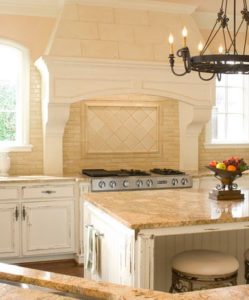 Learn the lingo. “Japurana,” a term that appears in many slab names, signals a slab with a flowing pattern. “Giallo,” another term that appears in multiple slab names, is Italian for “yellow” or “gold.”
Learn the lingo. “Japurana,” a term that appears in many slab names, signals a slab with a flowing pattern. “Giallo,” another term that appears in multiple slab names, is Italian for “yellow” or “gold.”
Avoid dyed slabs. Occasionally granite, most frequently Absolute Black, is dyed to enhance its hue. Seek out Absolute Black from India, rather than from China, where dyeing is more common.
Befriend your supplier and fabricator. This is the most important tip of all. Let their knowledge and experience guide you, and don’t be afraid to ask questions about the stone, including its durability and anything that might impact your costs.
A few more pointers about working with your supplier and fabricator:
-Shopping for stone counters early in your kitchen-remodel process can ensure optimization not only of your slab and money, but of the design potential of your slice of stone. A particularly lovely portion of your slab can be featured, or joints can be coordinated to reduce their appearance.
-Similarly, ask to view the template process, where the fabricator lays out the countertop sections. You can ensure that your favorite part isn’t omitted in the sink cutout and is instead featured in the center of the island.
–When you find a slab you love, secure the purchase, because that slab is one of a kind.


